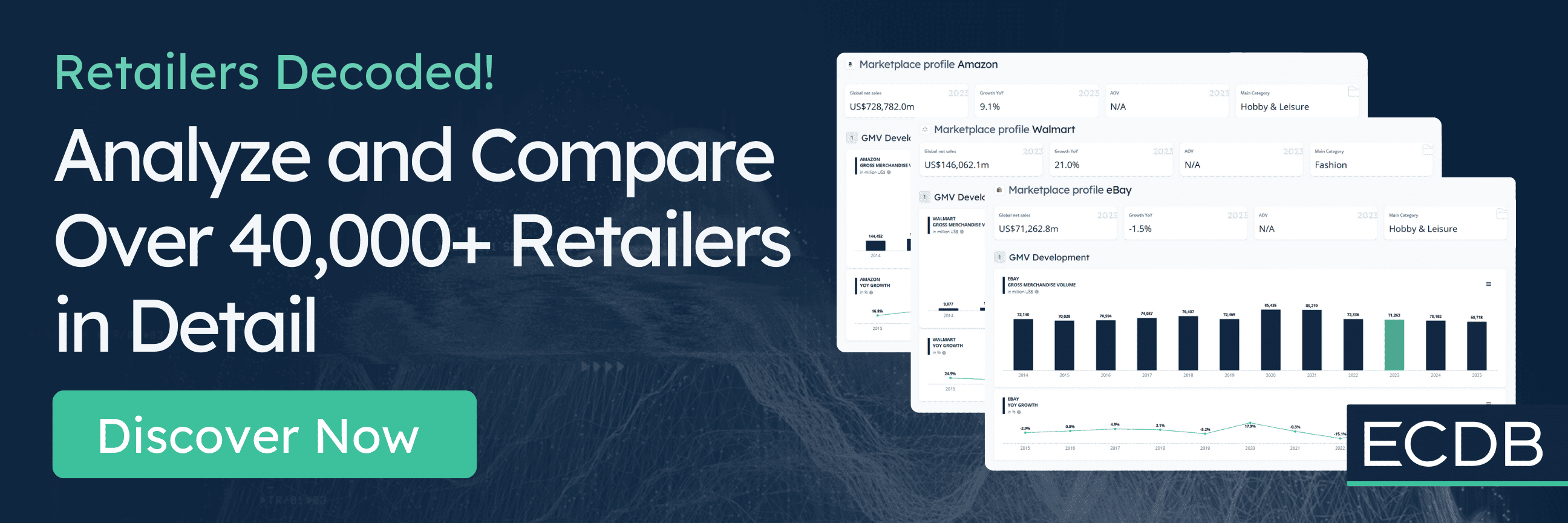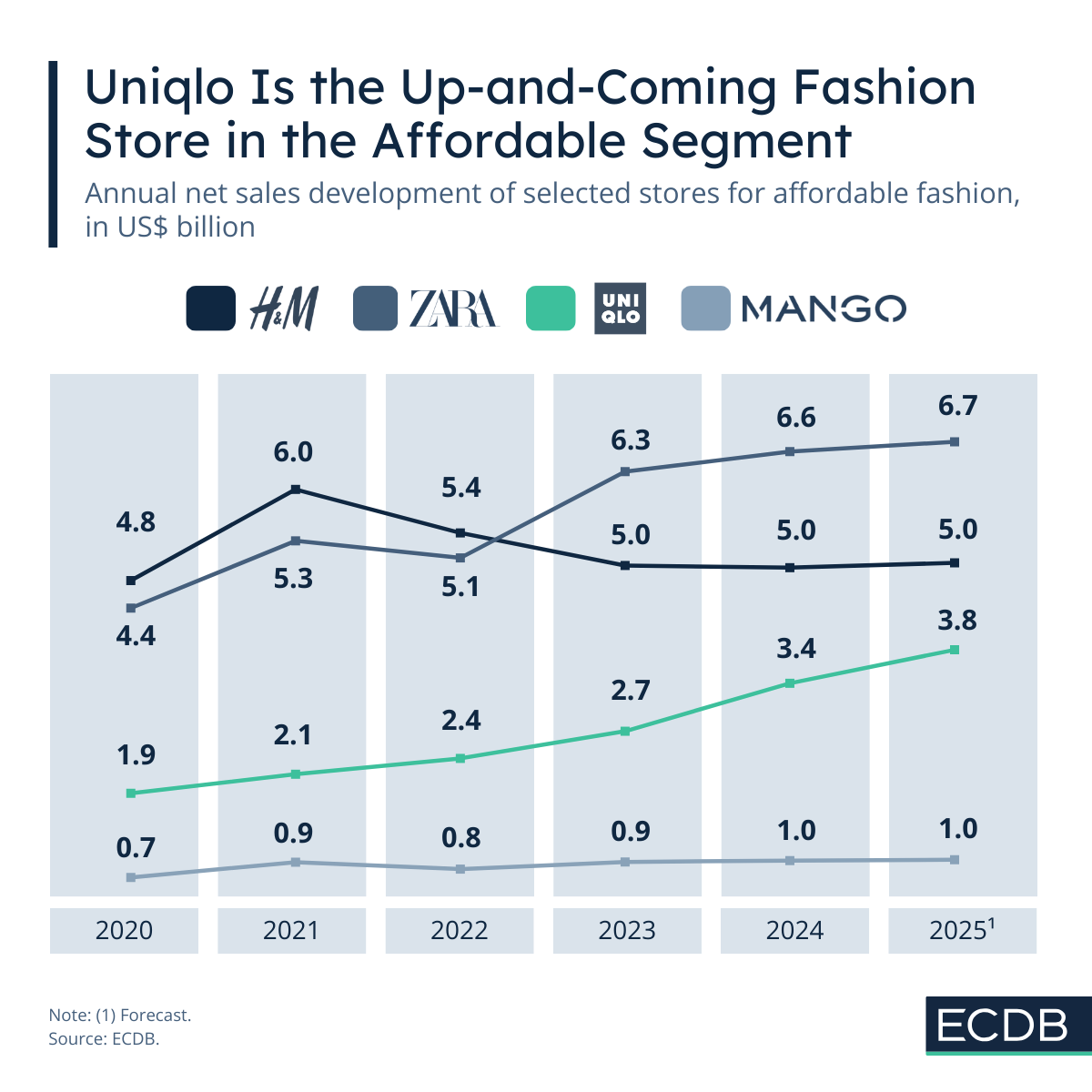The fashion online market is in a state of flux as innovations and new players enter the scene – shifts are common, observed in luxury to the affordable segment. This time, however, a not-so-often discussed competitor catches the eye: The Japanese fashion brand Uniqlo.
Comparing Uniqlo to three competitors that target a similar demographic, Uniqlo's rise becomes clear. All four fashion stores operate on a hybrid model, selling both online and through physical stores. Who is coming out on top? H&M, Zara, Uniqlo or Mango?
H&M eCommerce Revenue Slows Down While Zara Gains
Since the slowdown after pandemic peaks and in the recovery period after, established fashion retailers in the affordable segment were subject to more than just economic recession – the emergence of rival players with usually lower prices gave most retailers an additional headache.
One of the players that has been particularly affected by declining eCommerce sales was the Swedish fashion brand H&M. hm.com’s eCommerce net sales began to decline in 2022, and then stagnated in the following years. Its pandemic peak of US$6.0 billion in online net sales fell to US$5.4 billion in 2022, and has remained around US$5.0 billion since then.
This gave Zara the competitive edge it needed to overtake H&M; in 2023, the two switched positions, with zara.com surpassing hm.com in terms of eCommerce net sales. Where zara.com had net sales of US$5.3 billion in 2021, it managed to increase this pandemic value to US$6.3 billion in 2023. The current years of 2024 and 2025 implied further growth, eventually growing to US$6.7 billion in 2025.
Uniqlo Adds Pressure From Below
Not only has zara.com put pressure on hm.com from above, but uniqlo.com has emerged from relative unfamiliarity in recent years to become a viable competitor. The Japanese fashion brand combines two concepts that have been discussed throughout the industry: affordability and sustainability.
Uniqlo.com has seen a steady increase of online net sales over the past few years, surpassing US$2.0 billion in 2021 and reaching US$3.4 billion in 2024. Projections for 2025 show further growth, resulting in net sales of US$3.8 billion – not far off from hm.com’s US$5.0 billion.
At the lower end of the comparison is Mango, which is more or less stable with slight growth, just under US$1.0 billion in 2025.
Underlying Reasons for the Trend
All the numbers talk leaves one question open: What is the reason for Uniqlo’s and Zara’s surges compared to the others? Uniqlo is special in that it offers a sustainable alternative to fast fashion. Its styles are more minimal, providing consumers with basic items they can use for years. The concept is about quality at affordable prices.
H&M, Mango and Zara all have their basic segments, but they are better known for releasing frequent style updates and incorporating current trends into their collections to catch consumer attention.
Of the three, H&M can be seen as most similar to Uniqlo, in terms of price range and style approach. Zara has experienced greater differentiation since the pandemic, when the success of pure-play online players like Shein left brands with the choice of competing on the lower end of the price spectrum or offering fashion items with more emphasis on design and higher prices. Zara's decision to go with the latter has proven successful for its online business.










